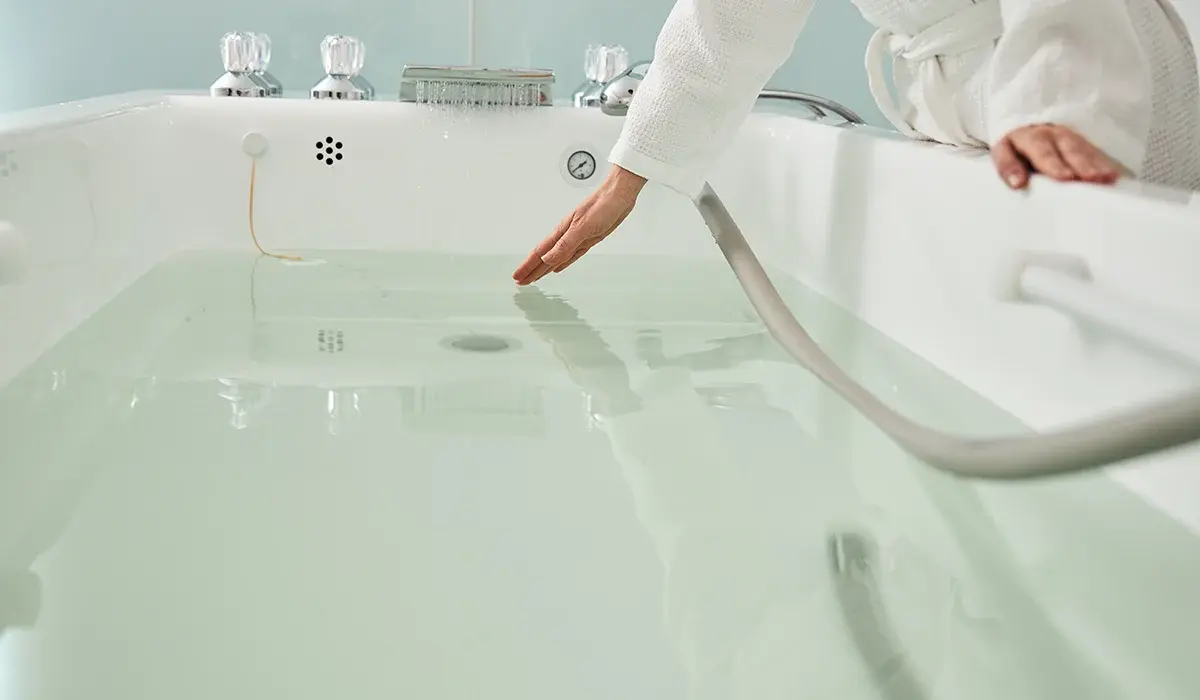Plumbing
How to Unclog a Slow-Draining Tub

How to Unclog a Slow Draining Tub: The Complete DIY Guide
A sluggish bathtub drain often signals buildup, minor clogs, or deeper plumbing issues that need attention. Fortunately, most blockages respond to do-it-yourself methods using basic tools. Learning how to unclog a slow draining tub saves money and prevents future plumbing headaches.
Understanding what causes drainage problems, spotting warning signs early, and applying the right techniques can restore fast water flow. This article offers actionable advice, detailed steps, and prevention tips.
Know Your Bathtub’s Drain System
To begin, you must understand how your bathtub’s drainage system functions. Each part plays an essential role in water removal.
Drain Components to Recognize
- Drain cover: Blocks large items from entering and clogging the pipe.
- Tub drain: Where water exits the tub into the pipe.
- Overflow tube: Prevents flooding if the tub overfills.
- P-trap: Holds water to block sewer gas from rising.
- Drain line: Moves water from the P-trap to your main sewer.
Knowing each part’s function helps you troubleshoot the issue quickly and effectively.
Common Signs Your Tub is Draining Slowly
Spotting problems early saves you from bigger messes. Be alert to these warning signs of a developing clog.
What To Look For
- Water stays pooled during showers.
- Tub takes longer to empty.
- Gurgling noises from the drain.
- Foul smells coming up from the pipe.
- Visible grime near the opening.
Act promptly once you notice these issues to prevent worsening blockages.
What Causes a Slow-Draining Bathtub?
Several common culprits can restrict water flow. Understanding them helps you apply the correct fix quickly.
Hair and Soap Scum
Hair and soap scum form sticky clogs over time. These materials trap other debris, worsening the problem and slowing water flow.
Foreign Objects
Toys, jewelry, and bottle caps often slip into the drain unnoticed. These create obstructions that require physical removal.
Drain Fitting Issues
Damaged or misaligned fittings can block water movement. Inspect them to ensure a secure and proper connection.
Pipe Corrosion
Old pipes corrode and fill with mineral deposits. That narrowing restricts drainage and may require professional replacement services.
Tools You Need to Unclog Your Tub
Before starting, gather basic tools to clear the drain. Most of these are inexpensive and widely available at hardware stores.
Essential Equipment List
- Plunger: Best for shallow clogs and first attempts.
- Drain auger: Flexible tool that reaches deep into the pipes.
- Drain snake: Ideal for breaking up hair clogs.
- Bucket: Catch water and debris during cleaning.
Have gloves and a flashlight on hand to improve visibility and hygiene while working.
DIY Methods to Unclog Slow Draining Tub
You can fix many issues yourself without calling a professional. Try the following trusted methods first.
Use a Plunger
- Remove the drain stopper.
- Fill the tub with a few inches of water.
- Place the plunger over the drain.
- Push and pull with force for 30 seconds.
- Remove it and check water flow.
Repeat a few times if necessary to see improvement.
Boiling Water Flush
Boiling water melts away soap and grease blockages. Pour boiling water directly down the drain in stages. Wait one minute between pours.
Baking Soda and Vinegar Method
This eco-friendly option dissolves scum:
- Remove standing water.
- Pour ½ cup of baking soda into the drain.
- Add ½ cup of vinegar.
- Cover with a wet cloth.
- Wait ten minutes, then flush with hot water.
This works great for minor blockages near the opening.
Manually Remove Hair
Use gloves and a flashlight to inspect the drain opening. Pull out any visible hair. For deeper clogs, use a drain snake.
Drain Auger Technique
Insert the auger into the drain and turn it clockwise. Keep pushing gently until you meet resistance. Continue turning, then pull out debris.
Unclog Slow Draining Tub issues often vanish after using this approach.
Use a Wet and Dry Vacuum
Set the vacuum to liquid mode. Create a seal around the hose and the drain. Turn on the suction to remove the blockage.
This method provides an effective, non-invasive way to unclog slow draining tub problems.
When You Should Call a Professional Plumber
Sometimes, DIY methods fail. Call a plumber when:
- You tried multiple methods without results.
- You hear gurgling from multiple drains.
- Water backs up or smells like sewage.
- Pipes appear rusted or leaking.
Professional tools can reach deep obstructions. Getting three quotes helps you compare pricing and services effectively.
Prevent Future Drainage Issues
Once your tub drains normally again, use proactive steps to avoid future clogs. Maintenance prevents frustration and damage.
Keep Your Drains Clear
- Flush with boiling water weekly.
- Use vinegar and baking soda monthly.
- Avoid dumping grease into any drains.
- Clean drain stoppers regularly.
These simple steps preserve your plumbing and avoid costly repairs.
Use Drain Covers
Install mesh drain screens or hair catchers. They block hair and debris before they enter the pipes. Clean them frequently to maintain performance.
Schedule Plumbing Inspections
Annual inspections by licensed plumbers identify hidden risks. Fixing small issues early prevents bigger problems later.
If you stay proactive, you likely won’t need to unclog slow draining tub pipes again anytime soon.
Final Thoughts on Tackling a Slow Tub Drain
Clearing a bathtub drain doesn’t always require professional help. With the right tools and methods, you can restore full drainage yourself. Stay consistent with prevention, and your plumbing will stay in top shape.
Explore More Home Tips
For more useful advice, home maintenance tips, and DIY guides, explore more news on this website. Keep your home running smoothly with easy, reliable solutions!
